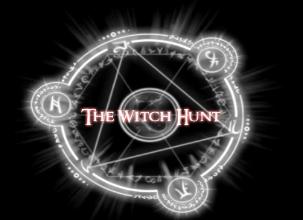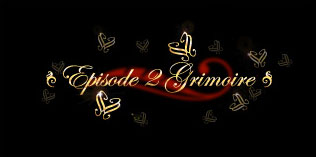This page will explain some bits of Japanese language and culture, as well as other
general notes, which you will need to know in order to fully understand
Ryuukishi07's world. Spoilers will be kept to a minimum and will all be limited to
Episode 2, but we will mention various events that occur throughout that Episode.
Chapter 1
“Oh ya, the president of Okonogi Foods.”
This is an obvious reference to one of the characters from Higurashi no Naku Koro ni Kai (When
They Cry 2)
Chapter 3
Tsundora
Reference to the term “Tsundere” (ツンデレ). This Japanese term is composed by two words,
“tsuntsun” and “deredere”, meaning respectively “aloof, cranky,…” and “lovestruck”. It is
mainly used for characters that are demonstrating an aggressive and/or cold behavior (tsuntsun)
but then become all lovey-dovey (deredere) under some circumstances.
The definition of such character archetype progressively branched into 2 specific types:
1) Characters that are very hostile towards the others but progressively turn all friendly, over the
time (old definition).
2) Characters that are very hostile at first, then flipping occasionally/periodically with their
affectionate side times to times (new definition).
Of course, the complexity of such characters can go past to these mere definitions (both definitions
can be applied on the same character at the same time). But generally speaking, Tsundere
characters are known to be dishonest and/or unsure about their feelings and prone to have mood
swings, the well-known bipolar aspect of such characters.
Note that although it is often used for female characters in your usual romance setup, this term is
not exclusively used for such instance, and can be applied to male and female alike, regardless of
whether it concerns their love interest or not.
‘Boku’
‘Boku’(僕/ぼく) is the pronoun for “I”. This is often used by young boys, rarely by teenagers and
adults who would rather use “ore” (俺/オレ) or neutral pronoun like watashi (私), and implies a
casual deference. Interestingly enough, the kanji can also be read as “shimobe”, meaning
“servant”, particularly convenient for Kanon.
Note that this pronoun might be used by female, but it does not mean they are acting tomboyish
(example: Tsukimiya Ayu, from Kanon...the game Kanon).
omgomg
The Japanese 'word' was ktkr, which is an abbreviation for “kita kore” (キタコレ), literally
meaning “it’s coming”. This Japanese online slang term is often used to demonstrate excitement,
expectation etc., at a given event, usually represented in ASCII art, as shown below.
キターーーーーーーーーーー( ・∀・ )ーーーーーーーーーーーーーーー!!!!
Tsurupettan (つるぺったん)
This word, pretty much like Tsundere, is the contraction of two words: “tsuru tsuru” (つるつる)
and “peta peta” (ぺたぺた) meaning respectively slippery/smooth and flat. This slang term is
referring to flat chest.
The song, composed by Silver Forest, is one of the most popular ones related to the characters
from Touhou Project, famous doujin danmaku shoot’em up, created by ZUN.
The song also has a Higurashi no Naku Koro ni reference, and you might notice the mention of
Oyashiro-sama. That entire line in the game does come from a verse of the song.
The cross reference is doubled with Jessica’s costume, which is Marisa’s, one of the main
characters of the Touhou franchise.
Finally, the colorful comments and ASCII arts you see all over the screen is actually a reference
to Nico Nico Douga (ニコニコ動画), a Japanese video streaming site, often considered to be the
Japanese counterpart of youtube, despite the fact that they are not related whatsoever. The main
original feature of this site is the ability for watchers to type comments that appear on the video
itself and playback with the video at the moment they write the comment.
Chapter 7
Kasparov
Garry Kasparov (Га́рри Ки́мович Каспа́ров) is a famous Russian chess player, often regarded as
the greatest chess player of all time. Retired in 2005, he now dedicates his life to writing and
politics.
Nanjo is most likely referring to Kasparov’s third match against Anatoly Karpov, in July 1986.
Devil's proof
The devil’s proof (悪魔の証明) is actually the legal requirement used in court, known as Probatio
Diabolica.
We chose to use the literal translation it flows better with the narration.
Chapter 10
Locus (plural: Loci)
A locus is basically a curved line or surface. The Japanese word used here can also mean a trace
or a track, and is pronounced the same as Kiseki, 'miracle'.
Chapter 11
6X9=42
This is neither a typo nor a mistake. Actually this is a reference to The Hitchhikers Guide to the
Galaxy.
Christie
This is of course a reference to Agathie Christie, distinguished writer for her crime novels.
She is known to be the creator of Hercule Poirot and Jane Marple.
Perpetual check
Pretty much like how Beatrice is explaining this word, a perpetual check is a situation in which
the game turns into a draw, as the player who is checking is unable to deliver a checkmate,
leading to an endless series of checks. This situation is often turned into a draw due to the
threefold repetition or the 50 moves rule.
Chapter 13
Was it Knox, or was it Van Dine? It seems that in mystery novels, there must not be hidden
passages, no matter what. I also follow that etiquette.
Another reference to crime novels authors. Actually, both Knox and Van Dine created a list of
rules that they said must be applied to any 'true' detective fiction.
Please have a look at Knox’s Ten Commandments, this might be useful in figuring out the extent
of “mystery” in Umineko no Naku Koro Ni.
general notes, which you will need to know in order to fully understand
Ryuukishi07's world. Spoilers will be kept to a minimum and will all be limited to
Episode 2, but we will mention various events that occur throughout that Episode.
Chapter 1
“Oh ya, the president of Okonogi Foods.”
This is an obvious reference to one of the characters from Higurashi no Naku Koro ni Kai (When
They Cry 2)
Chapter 3
Tsundora
Reference to the term “Tsundere” (ツンデレ). This Japanese term is composed by two words,
“tsuntsun” and “deredere”, meaning respectively “aloof, cranky,…” and “lovestruck”. It is
mainly used for characters that are demonstrating an aggressive and/or cold behavior (tsuntsun)
but then become all lovey-dovey (deredere) under some circumstances.
The definition of such character archetype progressively branched into 2 specific types:
1) Characters that are very hostile towards the others but progressively turn all friendly, over the
time (old definition).
2) Characters that are very hostile at first, then flipping occasionally/periodically with their
affectionate side times to times (new definition).
Of course, the complexity of such characters can go past to these mere definitions (both definitions
can be applied on the same character at the same time). But generally speaking, Tsundere
characters are known to be dishonest and/or unsure about their feelings and prone to have mood
swings, the well-known bipolar aspect of such characters.
Note that although it is often used for female characters in your usual romance setup, this term is
not exclusively used for such instance, and can be applied to male and female alike, regardless of
whether it concerns their love interest or not.
‘Boku’
‘Boku’(僕/ぼく) is the pronoun for “I”. This is often used by young boys, rarely by teenagers and
adults who would rather use “ore” (俺/オレ) or neutral pronoun like watashi (私), and implies a
casual deference. Interestingly enough, the kanji can also be read as “shimobe”, meaning
“servant”, particularly convenient for Kanon.
Note that this pronoun might be used by female, but it does not mean they are acting tomboyish
(example: Tsukimiya Ayu, from Kanon...the game Kanon).
omgomg
The Japanese 'word' was ktkr, which is an abbreviation for “kita kore” (キタコレ), literally
meaning “it’s coming”. This Japanese online slang term is often used to demonstrate excitement,
expectation etc., at a given event, usually represented in ASCII art, as shown below.
キターーーーーーーーーーー( ・∀・ )ーーーーーーーーーーーーーーー!!!!
Tsurupettan (つるぺったん)
This word, pretty much like Tsundere, is the contraction of two words: “tsuru tsuru” (つるつる)
and “peta peta” (ぺたぺた) meaning respectively slippery/smooth and flat. This slang term is
referring to flat chest.
The song, composed by Silver Forest, is one of the most popular ones related to the characters
from Touhou Project, famous doujin danmaku shoot’em up, created by ZUN.
The song also has a Higurashi no Naku Koro ni reference, and you might notice the mention of
Oyashiro-sama. That entire line in the game does come from a verse of the song.
The cross reference is doubled with Jessica’s costume, which is Marisa’s, one of the main
characters of the Touhou franchise.
Finally, the colorful comments and ASCII arts you see all over the screen is actually a reference
to Nico Nico Douga (ニコニコ動画), a Japanese video streaming site, often considered to be the
Japanese counterpart of youtube, despite the fact that they are not related whatsoever. The main
original feature of this site is the ability for watchers to type comments that appear on the video
itself and playback with the video at the moment they write the comment.
Chapter 7
Kasparov
Garry Kasparov (Га́рри Ки́мович Каспа́ров) is a famous Russian chess player, often regarded as
the greatest chess player of all time. Retired in 2005, he now dedicates his life to writing and
politics.
Nanjo is most likely referring to Kasparov’s third match against Anatoly Karpov, in July 1986.
Devil's proof
The devil’s proof (悪魔の証明) is actually the legal requirement used in court, known as Probatio
Diabolica.
We chose to use the literal translation it flows better with the narration.
Chapter 10
Locus (plural: Loci)
A locus is basically a curved line or surface. The Japanese word used here can also mean a trace
or a track, and is pronounced the same as Kiseki, 'miracle'.
Chapter 11
6X9=42
This is neither a typo nor a mistake. Actually this is a reference to The Hitchhikers Guide to the
Galaxy.
Christie
This is of course a reference to Agathie Christie, distinguished writer for her crime novels.
She is known to be the creator of Hercule Poirot and Jane Marple.
Perpetual check
Pretty much like how Beatrice is explaining this word, a perpetual check is a situation in which
the game turns into a draw, as the player who is checking is unable to deliver a checkmate,
leading to an endless series of checks. This situation is often turned into a draw due to the
threefold repetition or the 50 moves rule.
Chapter 13
Was it Knox, or was it Van Dine? It seems that in mystery novels, there must not be hidden
passages, no matter what. I also follow that etiquette.
Another reference to crime novels authors. Actually, both Knox and Van Dine created a list of
rules that they said must be applied to any 'true' detective fiction.
Please have a look at Knox’s Ten Commandments, this might be useful in figuring out the extent
of “mystery” in Umineko no Naku Koro Ni.


